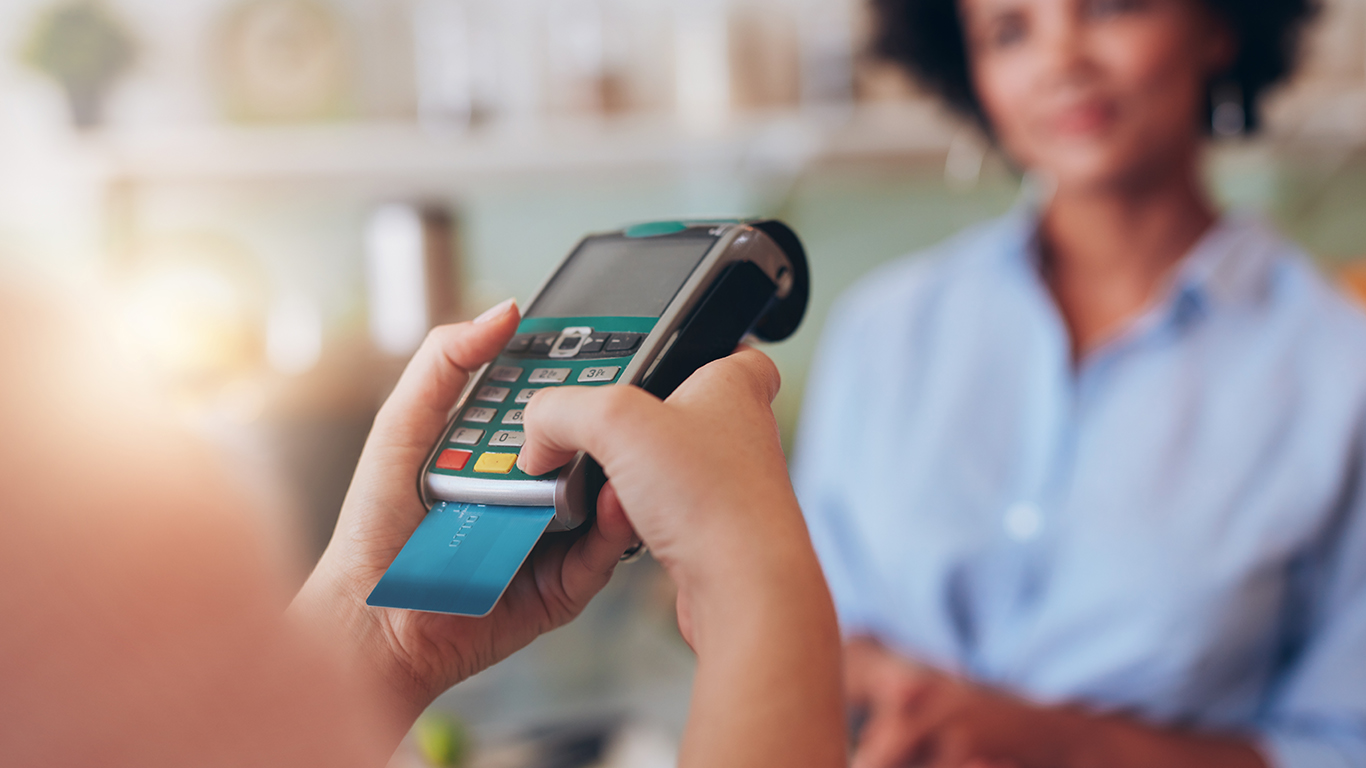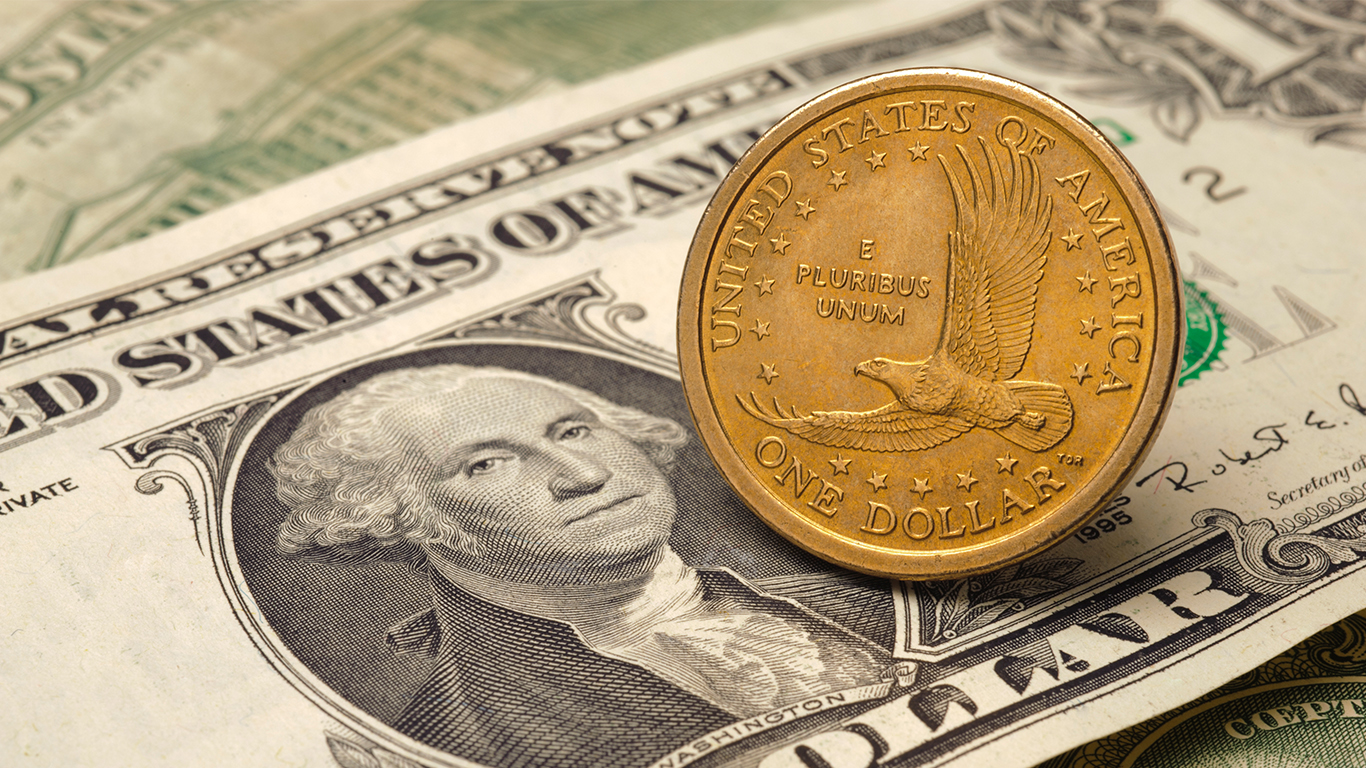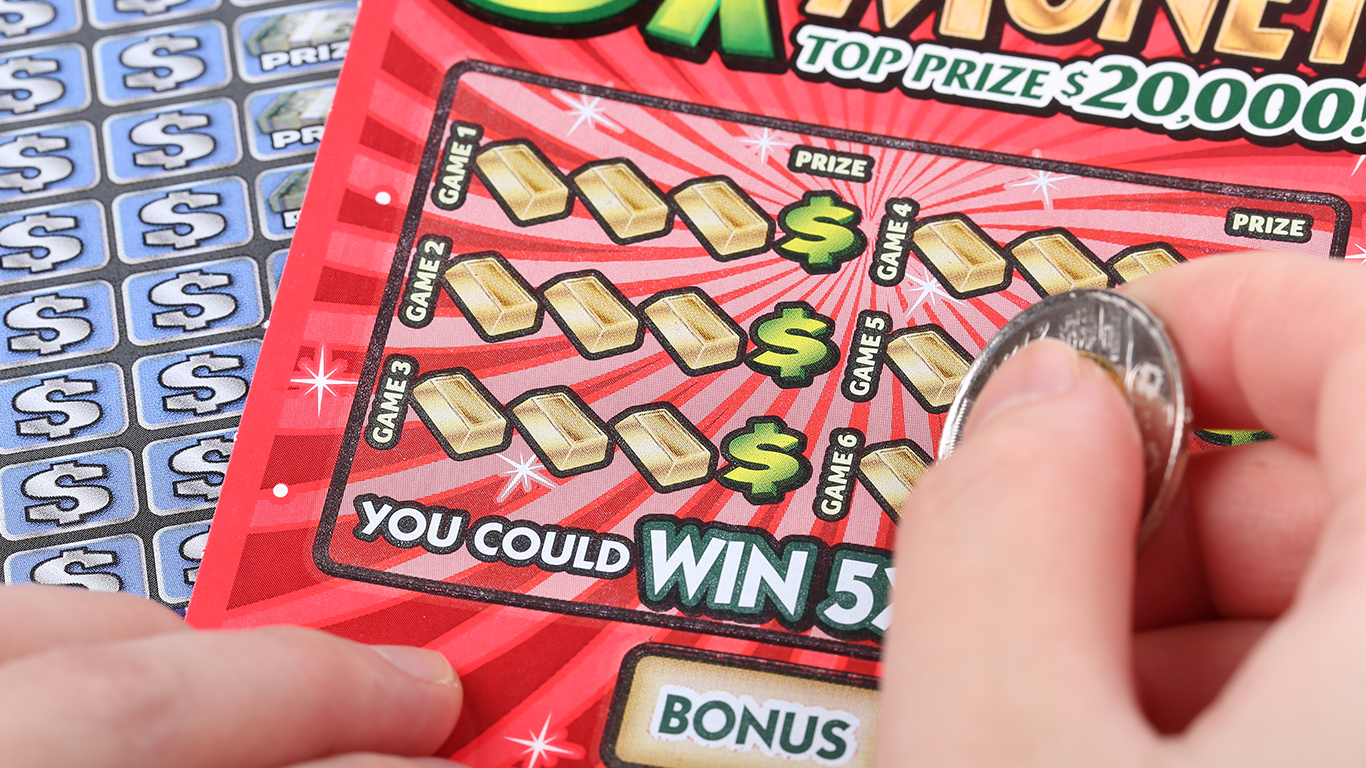Special Report
10 Things You Didn’t Know You Could Buy With a Credit Card

Published:
Last Updated:

We love our credit cards. These little rectangles of plastic (or, increasingly, metal) were originally used mostly for travel and entertainment. We still use them for those purposes, of course, and certainly for shopping, as well as for cash advances and to earn rebates or airline miles. These days, they have also become common for even the smallest purchases — cab fare, parking meter, a Caramel Cocoa Cluster Frappuccino. It is hard to imagine life without credit cards.
In recent years, Apple Pay and other mobile payment options have become increasingly popular, and industry sources project that cell phones will become the next likely payment device. Further in the future, implanted microchips could supplant both credit cards and mobile payment options. For now, though, credit card use is growing.
In the first quarter of 2018, new credit card accounts openings rose 4% from the same period last year. And while only about a third of adults between the ages of 18 and 29 carry credit cards, the credit reporting service Experian reported that “the tide is turning…” — and millennial credit card balances have grown 28% since 2011. Revolving consumer credit debt, which is comprised mostly of credit card debt, but excludes loans with fixed repayments and charge card debt, stood at $1.04 trillion in 2017.
Though many Americans use their credit cards for nearly all of their purchases, there are still some items most people do not realize can be purchased with plastic. Some examples include horses, gold bullion, Girl Scout cookies, and more. With a credit card these days, almost anything is possible.
Click here to see 10 things you didn’t know you could buy with a credit card.
Click here to see our detailed findings and methodology.

1. $1 coins
Buying cash on credit sounds like the kind of thing high-flying international financiers do, but it is actually within reach of anyone with plastic. The U.S. Mint has produced dollar coins off and on since 1794, including a series dedicated to U.S. presidents. The public never really embraced the idea of metallic bucks in place of paper money, and the Mint stopped making the presidential dollars for circulation in 2011 (minting of the earlier Susan B. Anthony dollar coin ceased in 1999). The U.S. mint continued making the presidential dollars as collectors’ items, though, along with a series of coins, produced since 2009, honoring Native Americans. The collectors’ coins are sometimes called “gold” for their color, but are actually an alloy of manganese and brass. Though the coins are not meant to be spent in the normal fashion, all are legal tender. The only catch is that they can cost as much as $1.52 apiece, when you factor in shipping costs.
[in-text-ad]

2. An ark with real animals
You can buy this animal-populated craft with a credit card, but you will not get to keep it. The organization that offers if for sale, Heifer International (www.heifer.org), gives donors the chance to buy farm animals, trees and plants, cookstoves, irrigation pumps, and more for people living in poverty in rural areas around the world. The ark is not an actual Noah-style hand-hewn gopher-wood Biblical ark. It is more of a virtual ark. But it is well-stocked — if not with two of every animal on earth, then at least with two water buffalo, two cows, two sheep, two goats, and an unspecified number of bees, chickens, rabbits, and more. All this will add $5,000 to your credit card bill, but it is enough, says the organization, to provide an entire community with milk, eggs, honey, and wool, as well as some income through the sale of surplus products.

3. A bank account
Here is a way to get cash on credit that does not involve commemorative coins. Some banks — among them Santander and Wells Fargo — allow new customers to fund their initial deposit with a credit card. The amount accepted in this manner varies from bank to bank.

4. Bees
Numerous suppliers will pack and ship these little buzzing insects to you. Georgia-based Beekeeping USA, for instance, can ship an Italian Bee starter package to 31 different states for $110 (at current sale price). This includes a wood screen box, 16 ounces of sugar water (bee food), and approximately three pounds of assorted nurse bees, forager bees, guard bees, and drone bees, plus a queen bee in a queen cage.
[in-text-ad-2]

5. College tuition
The cost of a higher education is a major expenditure in many households, and some colleges and universities allow paying fees by credit card — for those with a high enough credit limit, of course. A study three years ago by CreditCards.com surveyed 300 U.S. private, public, and community colleges, and found that 260 accepted credit cards for tuition payments. Almost all, however, add a convenience fee, as high as 2.99%, to the amount charged — and of course there are additional interest charges to the card provider in case the balance is not paid off all at once.

6. Girl Scout cookies
Thin Mints or Samoas? Tagalongs or Trefoils? Or maybe a box or three of those new-fangled Toffee-tastics or Girl Scout S’mores? Each regional Girl Scout Council determines when to send their green-garbed junior salespeople out to the shopping malls and downtown byways of America to hawk boxes of these popular confections, but it is usually between January and April (though some start sales as early as September). Sales traditionally last for six to eight weeks, and during that period the cookies are also available online — via credit card — from Scouts who participate in the organization’s Digital Cookie program. Some streetside cookie sellers also take plastic now, via cellphone card readers.
[in-text-ad]

7. Gold bullion
Nothing says “I’m rich” like a safe full of gold bars, called ingots or bullion. Some purveyors of precious metals accept credit cards for bars of gold (also silver, copper, and platinum), though to lessen the chances of fraud, they may put a limit on the amount that may be charged. Gold prices fluctuate daily, but at this writing, it goes for about $1,200 per Troy ounce, the measurement used for precious metals (1 Troy ounce equals about 1.1 avoirdupois ounce). The kind of gold bar you are probably picturing, though, weighs about 400 Troy ounces, so would cost about $480,000. On the other hand, a 100-gram (3.22 Troy-ounce) gold bar , measuring 1.22 inches wide, 2.17 inches long, and 0.12 inch thick, costs about $3,500.

8. A horse
It’s possible to get a horse for free, or for as little as a dollar — typically (though not always) an older “companion” horse or pet, not suited to be ridden strenuously. On the other hand, a thoroughbred named Fusaichi Pegasus, who won the 2000 Kentucky Derby, was sold later that year for a reported $70 million. The average price for a horse for personal use has been estimated at $1,000 to $8,000, depending on the breed and pedigree (to that, the horse-owner should figure on adding as much as $1,500 a month for boarding and up to $3,600 or so a year for health care, insurance, and equipment). While horse financing is available, and it is sometimes possible to buy a steed with a credit-card linked PayPal account, most horse dealers will not accept a conventional credit card. One exception is Premier Equine Auctions out of Dublin, Texas, which stages a number of auctions and horse sales annually and accepts Visa and MasterCard. The average price for the top 10 sellers at this summer’s sale is $9,480, so potential buyers would need a healthy credit limit.

9. House calls
Remember those old Westerns where the town doc would hitch up his wagon, grab his black bag, and ride off through a snowstorm to deliver a baby or stanch a gunshot wound out at the ranch? That was the ultimate “house call.” But house calls, in which doctors came to you, rather than vice versa, were once common in America. In the 1930s, according to the website MD at Home, they accounted for about 40% of patient visits. By 1950, the figure had fallen to 10%, and by 1980, it was 1%. The practice declined likely because it came to be seen as an inefficient use of doctors’ time. Other reasons for the decline include the lack of laboratory facilities and the ability to handle emergency situations. There are signs that an updated version of the practice might be returning for everyone — but in the meantime, those who need house calls and can afford it, can pay for “concierge doctor” services, typically priced at $1,500 to $1,700 a year, with their credit cards. These programs typically offer patients 24/7 access to physicians via personal cell phone, reduced or even non-existent office wait times for appointments, and, yes, house calls.
[in-text-ad-2]

10. Lottery tickets
You’re paying for gas, some Red Bull, and a bag of Flamin’ Hot Cheetos at the minimart counter, and on a whim decide to add a couple of Giant Jumbo Bucks lottery tickets to the tab. “Sorry,” says the woman behind the counter. “You’ll have to pay cash for those.” Some 44 states have government-run lotteries, and half of those allow credit card use for lottery ticket purchases. While some states have no restrictions, like Ohio which even has credit card-friendly self-service lottery ticket vending machines, other states, like Pennsylvania leave card acceptance to the discretion of the retailer.
Detailed findings
Though there were precedents — department stores and oil companies started issuing charge plates in the early 20th century, and the first bank-issued credit card, good for purchases within a two-square-block radius of the bank, appeared in Brooklyn in 1946 — the credit card era began in earnest in 1950. New York businessman Frank McNamara forgot his wallet one night while dining at a New York restaurant. This gave him the idea of creating a card that could be used in place of cash, which he called the Diners Club Card.
In 1958, American Express, well-known as a purveyor of traveler’s checks, launched its own card. These early examples are technically considered charge, not “credit,” cards, because they called for balances to be paid in full each month. It was also in 1958, though, that California-based Bank of America tested its BankAmericard, which allowed customers to pay their debt in increments, and was thus the first true credit card.
BankAmericard evolved into Visa Card — by far the industry leader today, with a market share of over 53% — and in 1966, a group of other California banks created the similar MasterCard to compete with it. Discover Card was launched nationally in 1986 by the Dean Witter Financial Services Group, then owned by Sears, Roebuck and Co.
Whichever card you prefer, 24/7 Wall St. has discovered some unexpected uses for it. There may be good reasons not to use a card for most of these purposes (interest charges, for one), but it is nice to know you can if you want to.
Methodology
To discover unexpected uses for credit cards and for the history of credit cards, we consulted CreditCards.com, a division of Bankrate, Inc., an online credit card marketplace. Additional information was gathered from the websites of Experian (a credit reporting company), Cardrates (a credit card information company), and the financial personal finance company WalletHub, as well as the Financial Industry Regulatory Authority and the Federal Reserve Bank of New York and various pertinent merchants and organizations. We did not include items that can be purchased only with a debit card, which are linked directly to bank accounts and therefore are not credit (or charge) cards, even though they are commonly used in the same way.
After two decades of reviewing financial products I haven’t seen anything like this. Credit card companies are at war, handing out free rewards and benefits to win the best customers.
A good cash back card can be worth thousands of dollars a year in free money, not to mention other perks like travel, insurance, and access to fancy lounges.
Our top pick today pays up to 5% cash back, a $200 bonus on top, and $0 annual fee. Click here to apply before they stop offering rewards this generous.
Flywheel Publishing has partnered with CardRatings for our coverage of credit card products. Flywheel Publishing and CardRatings may receive a commission from card issuers.
Thank you for reading! Have some feedback for us?
Contact the 24/7 Wall St. editorial team.